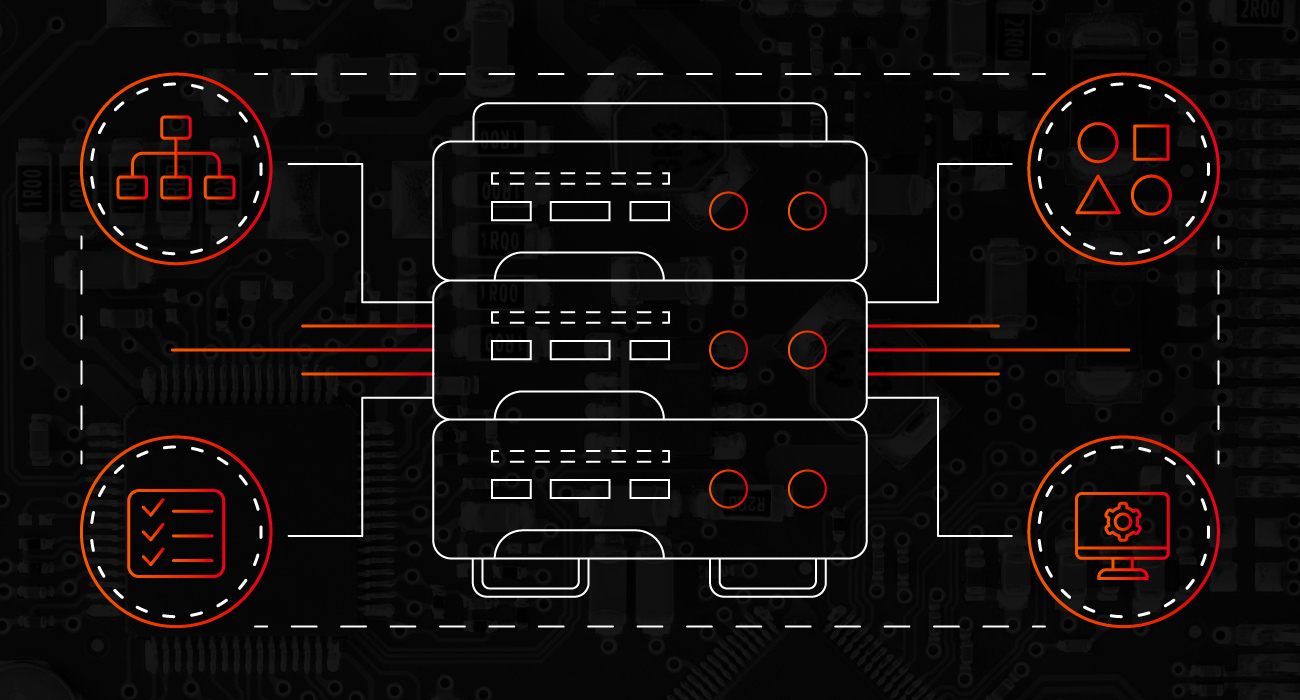Unified Namespace As A Scalable Data Backbone For IIoT

Many organizations struggle with siloed data, redundant systems, and inconsistent information. These inefficiencies not only slow down operations but also limit innovation and agility. To compete in today’s industrial landscape, companies need better access to structured, real-time data that’s shared across departments and technologies, and a Unified Namespace (UNS) provides the solution.
A UNS is a centralized data architecture that integrates information from devices, software, systems, and sites from across your enterprise into a single source of truth, enabling enterprise-wide access to real-time, contextualized data. By breaking down traditional barriers between IT and OT systems, a UNS enables you to scale operations without adding complexity.
In this blog, we’ll explore why a UNS is a game-changer for scaling your Industrial Internet of Things (IIoT) infrastructure and effectiveness and how to build a UNS.

How A UNS Supports And Enhances IIoT At Scale
A UNS enables your whole enterprise to access contextualized, accurate data from IIoT devices by creating a centralized single source of truth. This eliminates redundancy and ensures consistency in naming conventions, structures, and formatting across your system’s data sources, making it easier and more beneficial to integrate and reuse IIoT data.
The structure of a UNS improves the effectiveness of IIoT data by mirroring an organization’s actual structure through a semantic hierarchy, organizing data according to physical or logical divisions like site, line, machine, and tag. This helps teams understand exactly where data originates and how it flows through the system, supporting faster decision-making and troubleshooting. Also, with a standardized open protocol and semantic modeling, a UNS enables interoperability between IIoT devices and plug-and-play integration between legacy and modern systems, reducing the cost and time required for digital upgrades.
A UNS leverages an event-driven architecture, commonly built on MQTT, to notify subscribed systems the moment data from your IIoT devices change. This architecture ensures real-time responsiveness and significantly reduces the load associated with polling for updates. With access to high-quality, real-time IIoT data, engineers are able to build, test, and deploy new solutions quickly and with greater confidence, which accelerates development cycles.
Additionally, centralizing your data architecture also strengthens security by standardizing access controls, authentication policies, and encryption standards across your entire data infrastructure.

The Components Of A UNS
Data sources are the foundation of a UNS. These include PLCs, supervisory control and data acquisition (SCADA) systems, manufacturing execution system (MES) platforms, IIoT devices, sensors, enterprise resource planning (ERP) systems, and even CRM tools. The data from these sources is sent to middleware, such as an MQTT broker, which serves as the communication hub that routes data between publishers and subscribers. MQTT, especially when paired with Sparkplug B, adds critical context and structure to the data, ensuring it is reliable and intelligible across applications.
The consumers in a UNS are the tools that use this structured data, ranging from AI and ML to ERP systems and business intelligence dashboards. A platform like Inductive Automation’s Ignition that connects IIoT devices and data plays a key role in organizing and refining raw data into structured formats. It also provides intuitive dashboards, alerting systems, and easy integration with enterprise applications.
Finally, the data persistence layer ensures long-term data availability. Time-series data can be stored in a historian for analysis and compliance purposes, while structured data is stored in SQL databases for operational reporting and business intelligence use.

Unified Namespace Models
There are multiple ways to organize a UNS depending on business goals, and most organizations will use a combination of these models.
- A Functional Namespace organizes data by task or operation. For example, a medical device company may use this model to group all production data into a single namespace to track OEE, identify bottlenecks, and optimize manufacturing efficiency.
- An Informative Namespace groups data by information type, such as temperature, voltage, or pressure. An automotive manufacturer could use this model to supply real-time energy metrics to an energy-tracking application and make informed decisions about power consumption.
- A Definitional Namespace structures metadata about assets, including firmware versions, installation dates, or calibration parameters. A pharmaceutical company might use this model to group all parameters related to bioreactors for cross-comparison and performance optimization.
- An Ad Hoc Namespace is for temporarily addressing urgent issues or for conducting short-term analysis. In the case of an equipment failure, an oil and gas operator might pull relevant data from different systems into an ad hoc namespace to quickly isolate the problem and deploy a fix. However, if you leave an ad hoc namespace unmanaged, it could lead to duplicate data across the system, which can cause confusion. Also, most of the time, you should do this type of analysis through a subscriber rather than a publisher to re-organize it for your specific needs.

Best Practices For Implementing A UNS
Everyone's system is different, so there is no one-size-fits-all solution to make the best UNS, but there are a few important implementation considerations that everyone should take when building a UNS.
- Build Your UNS To Grow: The best place to start when implementing a UNS is with real user requirements by involving operators, engineers, analysts, and executives early in the design process. The structure of your UNS should reflect how your business actually operates. It’s also good practice to continuously monitor your UNS and make consistent improvements based on user feedback and performance analytics. Treat it as a living system that evolves with your business needs and technological advancements.
- Clarity Over Complexity: Avoid the temptation to over-model your data. Instead of capturing every possible parameter, focus on meaningful and actionable data points. A simpler model is easier to maintain, scale, and adapt over time. Also, adopting consistent naming convention standards, such as those based on ISA-95, improves clarity and enables easier cross-system integration.
- Reusable Components And Templates: One of the key advantages of a UNS is its ability to serve multiple applications with a single model. Promoting reusability across departments can reduce development time, eliminate duplication, and increase ROI. Reusable components like standardized tag structures or asset templates make your system more scalable and consistent across teams and projects.
- Maintain High-Quality Data: Make sure to implement routines for data validation, cleansing, and normalization. High data quality ensures that your consuming systems, like dashboards or analytics tools, can rely on the information they receive. A federated model can help establish global standards for structure and quality while allowing individual departments to manage their own publishing rules and validation processes.
- IIoT And Interoperability: Legacy devices may not natively support MQTT or structured data models. This is a perfect example of how IIoT and UNS work together synergistically because IIoT gateways can publish data to a UNS on behalf of legacy devices, enabling interoperability with nearly any device. You can also create custom connectors or data translation layers to integrate these systems into your UNS.

Your IIoT Backbone Starts With Ignition
A well-designed UNS is a strategic foundation for scaling your Digital Transformation. And Ignition gives you the tools to build that foundation effectively. By organizing, contextualizing, and delivering real-time data across both IT and OT systems, Ignition empowers your teams to build smarter automation systems, reduce integration complexity, and make better decisions faster.
Whether you’re just beginning your UNS journey or looking to refine and scale an existing model, Ignition helps you bring it all together by future-proofing your infrastructure and accelerating your path to digital maturity. Check out our UNS Solutions page to learn more about how Ignition can help you with your UNS.
